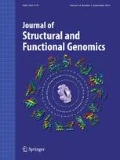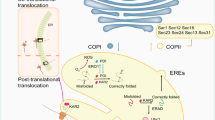Abstract
It is difficult to imagine any strategy for high-throughput protein expression and purification that does not involve genetically engineered affinity tags. Because of its ability to enhance the solubility and promote the proper folding of its fusion partners, Escherichia coli maltose-binding protein (MBP) is a particularly useful affinity tag. However, not all MBP fusion proteins bind efficiently to amylose resin, and even when they do it is usually not possible to obtain a sample of adequate purity after a single affinity step. To address this problem, we endeavored to incorporate supplemental affinity tags within the framework of an MBP fusion protein. We show that both the nature of the supplemental tags and their location can influence the ability of MBP to promote the solubility of its fusion partners. The most promising configurations for high-throughput protein expression and purification appear to be a fusion protein with a biotin acceptor peptide (BAP) on the N-terminus of MBP and/or a hexahistidine tag (His-tag) on the C-terminus of the passenger protein. Abbreviatoins: BAP, biotin acceptor peptide; EDTA, ethelenediaminetetraacetic acid; IPTG, isopropyl-β-d-thiogalactopyranoside; MBP, E. coli maltose-binding protein; GFP; green fluorescent protein; Ni-NTA, nickel-nitrilotriacetic acid; ORF, open reading frame; PCR; polymerase chain reaction; R5, polyarginine tag; SDS-PAGE, sodium dodecyl sulfate-polyacrylamide gel electrophoresis; TEV, tobacco etch virus; WT, wild-type
Similar content being viewed by others
References
Baneyx, F. (1999) Curr. Opin. Biotechnol. 10, 411–421.
Stevens, R.C. (2000) Structure 8, R177–R185.
Kapust, R.B., and Waugh, D.S. (1999) Prot. Sci. 8, 1668–74.
Pryor K.D., and Leiting, B. (1997) Protein Expr. Purif. 10, 309–319.
Bach, H., Mazor, Y., Shaky, S., Shoham-Lev, A., Berdichevsky, Y., Gutnick, D.L., and Benhar, I. (2001) J. Mol. Biol. 312, 79–93.
Edwards, A.M., Arrowsmith, C.H., Christendat, D., Dharamsi, A., Friesen, J.D., Greenblatt, J.F., and Vedadi, M. (2000) Nat. Struct. Biol. 7 Suppl., 970–972.
Tsao, K.-L., DeBarbieri, B., Michel, H., and Waugh, D.S. (1996) Gene 169, 59–64.
Fox, J.D., Kapust, R.B., and Waugh, D.S. (2001) Prot. Sci. 10, 622–630.
Ho, S.N, Hunt, H.D., Horton, R.M., Pullen, J.K., and Pease, L.R. (1989) Gene 77, 51–59.
Fox, J.D., and Waugh, D.S. (2002) Meth. Mol. Biol. in press.
Parks, T.D., Leuther, K.K., Howard, E.D., Johnston, S.A., and Dougherty, W.G. (1994) Anal. Biochem. 216, 413–417.
Sassenfeld, H.M., and Brewer, S.J. (1984) Bio/Technology 2, 76–81.
Hochuli, E., Bannwarth, W., Dabeli, H., Gentz, R., and Stuber, D. (1988) Bio/Technology 6, 1321–1325.
Schatz, P.J. (1993) Bio/Technology 11, 1138–1143.
Kohanski, R.A., and Lane, M.D. (1990) Meth. Enzymol. 184, 194–200.
Morag, E., Bayer, E.A., and Wilchek, M. (1996) Anal. Biochem. 243, 257–263.
Betton, J.-M., Jacob, J.P., Hofnung, M., and Broome-Smith, J.K. (1997) Bio/Technology 15, 1276–1279.
Martineau, P., Guillet, J.-G., Leclerc, C., and Hofnung, M. (1992) Gene 113, 35–46.
Betton, J.-M., Martineau, P., Saurin, W., and Hofnung, M. (1993) FEBS Letts. 325, 34–38.
Spurlino, J.C., Lu, G.-Y., and Quiocho, F.A. (1991) J. Biol. Chem. 266, 5202–5219.
Evdokimov, A.G., Anderson, D.E., Routzahn, K.M., and Waugh, D.S. (2001) J. Mol. Biol. 305, 891–904.
Bucher, M.H., Evdokimov, A.G., and Waugh, D.S. (2002) Acta Crystallogr. D 58, 392–397.
Berman, H.M., Westbrook, J., Feng, Z., Gilliland, G., Bhat, T.N., Weissig, H., Shindyalov, I.N., and Bourne, P.E. (2000) Nucleic Acids Res. 28, 235–242.
Beckett, D., Kovaleva, E., and Schatz, P.J. (1999) Prot. Sci. 8, 921–929.
Fall, R.R. (1979) Meth. Enzymol. 62, 390–398.
Author information
Authors and Affiliations
Rights and permissions
About this article
Cite this article
Routzahn, K.M., Waugh, D.S. Differential effects of supplementary affinity tags on the solubility of MBP fusion proteins. J Struct Func Genom 2, 83–92 (2002). https://doi.org/10.1023/A:1020424023207
Issue Date:
DOI: https://doi.org/10.1023/A:1020424023207




